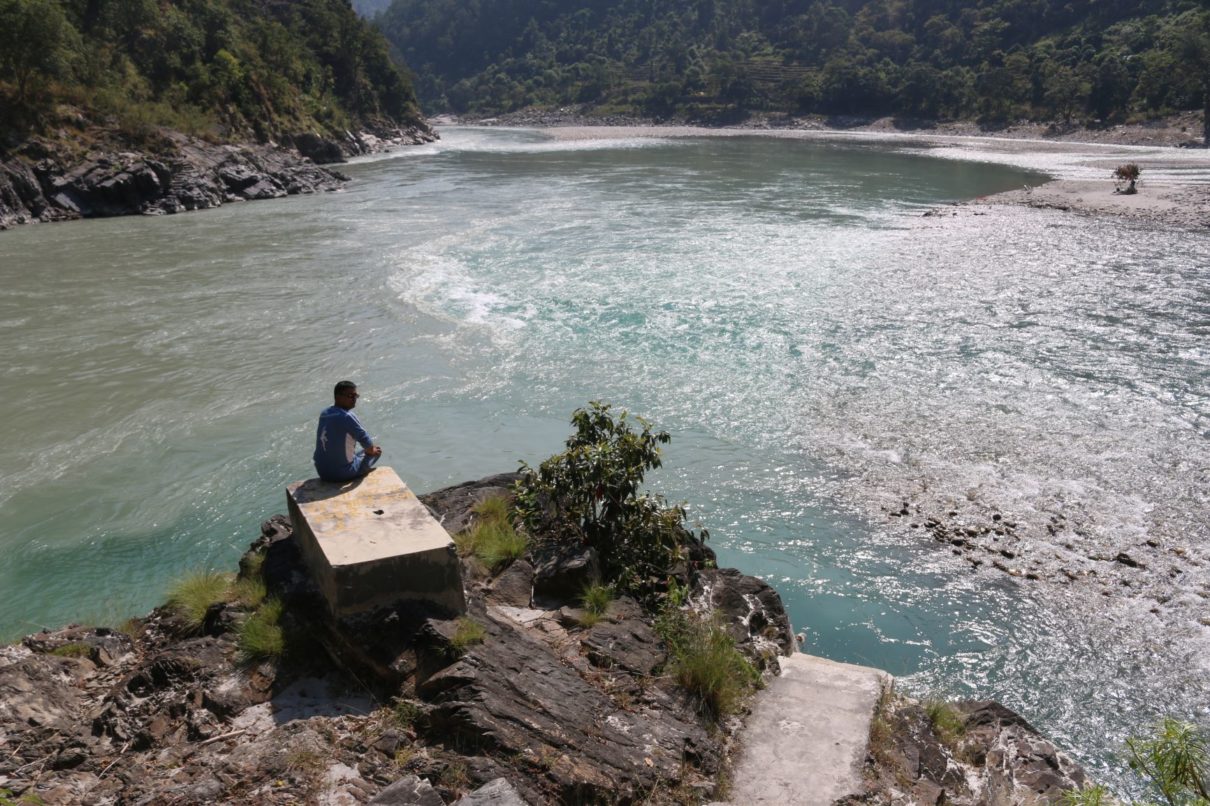If we visited the Simba Waterfall first, we would not make it to Gotikhel. Additionally, we did not have enough time to visit the famous Kaleshwar Temple. Therefore, we decided to proceed straight towards the hidden village. According to Google Maps, it was a 55 km journey from our home in Gatthaghar, Bhaktapur, with a road full of ups and downs. However, Anchit, the novice driver, navigated it with ease. Finally, we arrived in Gotikhel. Despite being so close to Kathmandu, the surrounding areas resembled remote villages in Karnali. The hidden village was just another three kilometers away from here.
Just before reaching Lukeko Gaun, I asked an elderly local about the reason behind the name "hidden village." He explained that it was because the village is situated in a narrow valley surrounded by hills. However, upon reaching the village, we discovered its true name—Katban Besi. When I asked Gitamaya Ghimire, a 70-year-old resident, about the name of the village, she confirmed that it was indeed Katban Besi and expressed her confusion over why it had been called a hidden village. The elders we met in the village were uncertain about whether life there was easy or hard. According to Gitamaya, "It must be hard; even we elderly have to work. We haven't experienced the comfort of city life. We have to travel to the city for medical treatment if someone gets sick." Khil Prasad Ghimire (73) expressed his dissatisfaction with the lack of development in the village, and as a former chairperson of his ward in the 1990s, he blamed the performance of people's representatives, including former lawmaker Nawaraj Silwal and the incumbent Udaya Shamsher Rana. During conversation with local elders, the reason behind the village's name became clear. Despite its potential for tourism development and its natural beauty, the village lacks the necessary infrastructure and facilities. Anchit, who has visited countries like Belarus and Australia and explored various villages through YouTube, compared this village with villages in other countries, such as Switzerland, which offer all necessary amenities. As I compared this hidden village with other remote villages in Dolpa, Humla, and Jumla, I realized that geographical difficulties cannot be an excuse for the lack of development. Countries like China have successfully attracted millions of tourists to their villages by providing necessary infrastructure and facilities. It is clear that our country lacks a vision and commitment to develop and promote tourism in rural areas. Lukeko Gaun: A Dream Project We spoke with a young man named Gopal (Bhawani) Aryal, who had recently returned to the village after spending 16 years in the city. As someone involved in community theater, Aryal had traveled to a remote African village in 2015 as part of the Dragon Dreaming Project, an artistic approach to project design. He stayed in a deserted house on the shores of the Atlantic Ocean for seven days and experienced the closeness of being with isolated nature. Aryal expressed his vision for an art village in the mountains and forests, where residential workshops could be held. He mentioned that although Nepal may not have a sea, it has an abundance of mountains and forests that could serve as a stunning backdrop for such a village. This vision was shared by all others in the team, who were mostly Europeans. While registering his venture, he was denied the name 'Lukeko Gaun Pvt Ltd'. As a result, he had to settle for 'Lukeko Gaun Arts and Farming Pvt Ltd'. He wants to link the village life, culture, tradition, and nature with the global village; he wants to heal the underprivileged people of the area. He and other helping hands are working to make this happen. There are three ways to reach Lukeko Gaun. The first is from Lele via Dalchowki, Shanku, Bhakari Danda, and Bhukhel. The second is the old trail from Lele via Nallu, Bhardeu, Chaughare, and Kataban Bhanjyang. The third one is a new track from Lele which goes along Nallu Khola to Chaughare, Thosne Khola, and Unyu Chaur. Article 26 (13) of the Constitution of Nepal, 1990, states that the State shall pursue a policy of creating conditions for accelerating rural development, keeping in view the welfare of the majority of the rural population. But people in this part of Lalitpur have yet to experience the fruits of development, though 32 years have passed since the promulgation of that charter. For the state, blacktopping the Lele-Gotikhel road is not a huge undertaking. But the state doesn't feel it is necessary. As for the locals, they neither have access to the corridors of power nor the technology and the resources to blacktop the road.











